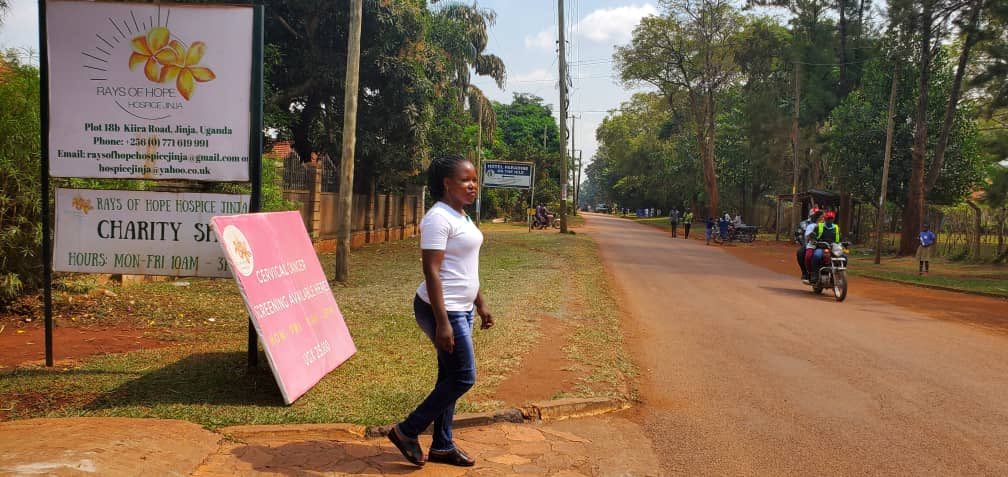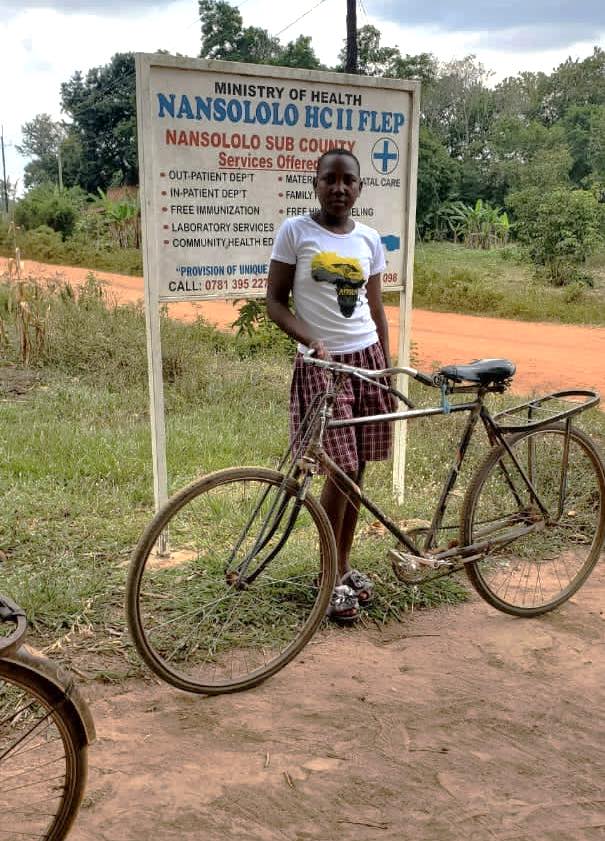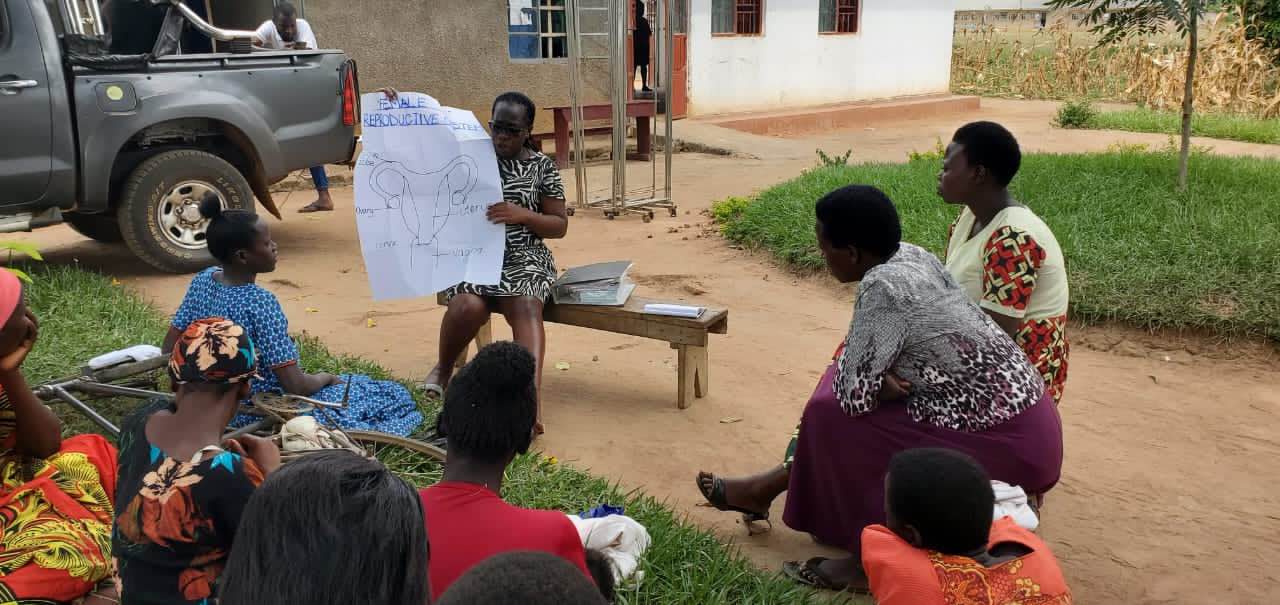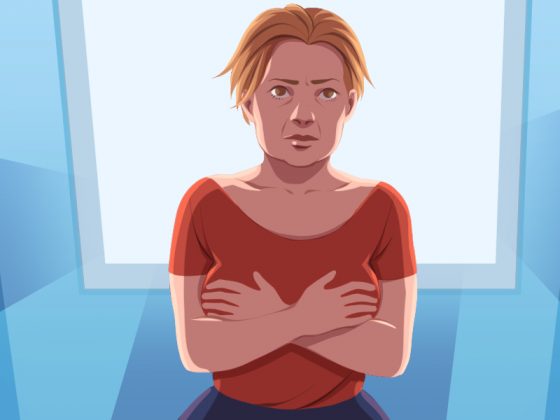It’s 9.30 in the heart of Kaliro district in eastern Uganda, and a group of women is already gathered outside the Nansololo Health Centre II by the time the van from the Rays of Hope Hospice Jinja arrives. They are not here to seek the expert palliative care that the hospice has been delivering to people in that region since 2005. They are here to get checked out for cervical and breast cancer, in the hope that they might thereby avoid the need for such palliative care in future.
Cervical cancer is by far the most common cancer among women in Uganda at all ages, and also the most common among the 15–44 years old age group. Figures published by the WHO’s Information Centre on HPV in 2023 show there were almost 7,000 new cases of cervical cancer, and just over 4,600 deaths, indicating in rough terms that almost two out of three women diagnosed with this preventable and treatable disease end up dying from it.
The problem, says Michael Baganizi, the Program Manager at Uganda’s National Extended Program on Immunization (UNEPI) is that, while Uganda has adopted the three-pronged approach to eliminating cervical cancer that is recommended by the WHO – vaccinating 90% of girls aged 10–14, regular screening of 70% of women between the ages of 25 and 65, and treating 90% of eligible cases – screening rates are still very low.
“Current coverage of HPV vaccination for 2022/23 [among 10-year-olds] is over 95% for the first dose and 74% for the second dose,” he says. “However, the country is still struggling in the area of screening and treatment of cervical cancer.”
Martin Origa, a gynaecological oncologist at the Uganda Cancer Institute, says current screening rates vary across the country from around 25% to as low as 4% – “a far cry from the global standards.” The Ministry of Health strongly advocates that women commence cervical cancer screening between the ages of 25–30 and repeat the screening every three to five years until the age of 65, says Origa. However, given that systematic screening is not yet widespread, he adds, as a more immediate goal, ideally, women should undergo screening at least three times in their lifetime.
The government is focusing heavily on rolling out access to the HPV DNA test, which tests cervical cells for infection with high-risk strains of the HPV virus. “This innovation has enhanced our screening practices, enabling women to potentially undergo screenings every five years instead of the previous three-year interval,” says Origa. But as he adds, scaling it up will be costly.
He stresses the urgency of ensuring women have the chance to protect their lives. “There is a pressing need to improve these screening rates to effectively combat cervical cancer.”
An unlikely champion
The Rays of Hope Hospice, based in Jinja – on the north shores of Lake Victoria, where the White Nile starts its long journey – has no need of experts to inform them about the urgent need to screen women for cervical cancers. That much became clear to them from an analysis of their own patient numbers that they conducted in 2018.
They were shocked to see that almost half of all the female patients for whom they provided palliative care to ease their end of life, had cervical cancer. That proportion increased to almost two-thirds if patients with breast cancer were included.
This revelation ignited a call to action. Aware that both cancers respond well to early diagnosis and intervention, the hospice took the unusual step of transitioning some of its efforts to the opposite end of the cancer journey – prevention and early detection.
They were shocked to see that almost half the female patients for whom they provided palliative care had cervical cancer
“We observed, through our data on cervical cancer palliative patients, that we typically encounter patients at the end stages of their journey,” explains Sylvia Nakami, Executive Director of Rays of Hope. “However, recognising the need to intervene much earlier in the process, we initiated a cervical cancer screening programme.”
Margrethe Juncker, a volunteer doctor and programme advisor, says lack of information is a major obstacle, and from the start, much of their efforts have centred on advocacy, to make sure people know about the disease and about screening and vaccination. “Back then, like for HIV/AIDS, nobody knew anything about what it is, but what you can do is get the information out there. It has been very interesting; we started to work with the DHOs [district health officers’] office and health centres, and they have really taken interest. But my feeling is, very few really knew much about cervical cancer. It was not given attention until they started understanding what kind of disease it is and how it can be prevented.”

©Esther Nakkazi
The Rays of Hope Hospice, Jinja, worked with specialists to train staff in evidence-based low-tech screening techniques. They then set about organising mobile screening clinics, primarily in rural areas, that offer information sessions together with free breast and cervical examinations. It was one of these mobile clinics that rolled up to the Nansololo Health Centre II building that morning, where the group of women from the Kaliro district were waiting for them.
Knocking at an open door
The women had learned about this opportunity from various sources: some through the reverberating calls of village megaphones that announced the event in the bustling market squares; others at church gatherings. As with the hundreds of other women who have attended similar screening events, their presence confounded fears that were widely held at the start of the programme, that women would be reluctant to allow themselves to be subjected to vaginal examinations.
This had been a big concern for Juncker, but happily, she says, the response has been overwhelmingly positive. “Women did come forward, and they came in large numbers. It seems that their motivation stemmed from witnessing their older sisters, friends, and neighbours who had suffered from the disease. They recognised the importance of screening and had been waiting for the opportunity to get screened themselves.”
“They recognised the importance of screening and had been waiting for the opportunity to get screened themselves”
But it was not just women who came forward. There were also a few teenage girls numbered among those gathered outside the Nansololo health centre. Ephrance and Jackline attend the local school situated right next to the health centre; their matron had recommended they attend to pick up information that could be important for their future health. Another teen, Tracy, was there at the insistence of her father. She’d cycled for 30 minutes to get there. She was worried about her breasts, and with her mother away working in the Middle East, her father had suggested she should ask at the mobile clinic for guidance. “I had to leave school early to come here,” she said, “because I have some pain in my breasts and I also want to know more about the HPV vaccine.”
Education is key
The visit starts with an educational session led by Christine Gwokyalya, a public health specialist who volunteers with the Rays of Hope Hospice. She uses a diagram to show the girls and women where the cervix is located within their body. The discussion emphasises the value, according to age group, of undergoing cervical cancer screening and of participating in the HPV vaccine programme.
Questions are raised about the causes of cervical cancer, yielding diverse opinions from the audience. Some women in the group attribute it to bearing multiple children, while others associate it with early childbirth, contraceptive use, or having multiple partners.
The women also talk about their own experiences. Some have encountered the disease in their own families. Joeline Neiruba, a 39-year-old mother of five, tells a harrowing story of a woman in her village: “Her husband abandoned her, and everybody shunned her because she was smelly and the bleeding was non-stop. She later died of cervical cancer.”
Rose Nabirye, a 34-year-old mother of five, talked about her experiences nursing her aunt, who was sick with cervical cancer, until she died. That experience convinced her to ensure she protected herself and her children. “I would allow my four daughters to get the HPV vaccine because… I don’t want to end up with the same fate.”
Jackline volunteered that this was not the advice she was getting from her family: “My mother told me that if they bring it to school I should not accept it,” she said. Ephrance’s parents, in contrast, had encouraged her to receive the vaccine, she said, but she’d not managed to complete the course. “I was in a Walukube West boarding school when I got the first shot. But we moved here, and I have not received another shot,” she explained. Gwokyalya tells them which healthcare facility they can go to get their HPV shots.

©Esther Nakkazi
By now it is around 11 o’clock – a time when the womenfolk in the villages would normally be tending their plots of land. More than 20 women are already present, and others are still making their way to Nansololo Health Centre II.
The screening system
While Gwokyalya has been leading the information session and discussion, two members of the Rays of Hope Hospice staff – Irene Naleba, a clinical officer, and Esther Apolot, a palliative care nurse – have been preparing to do the breast and cervical cancer screening inside the Nansololo Health Centre II (the ‘II’ indicates it is an outpatient clinic run by a nurse – the next level up from hyperlocal village health teams). This they do using low-tech techniques that have shown to be effective. For breast screening, it involves clinical examination using palpation – a technique they also teach to the women, so they can perform routine self-examinations.
For cervical screening they use visual inspection with acetic acid (VIA). The method – which involves applying 3–5% acetic acid to the cervix, causing abnormal cells to turn pale, and making it possible to see them with a naked eye – is less reliable than the HPV testing the government is focused on rolling out, and it identifies potential cancers/precancers at a later stage, which is why it needs to be done more frequently. However, it is also much cheaper, and delivers instant results, avoiding both the need to harvest, store or transport specimens and the need for laboratories to process them.
Around one in every nine women screened in the region covered by the Rays of Hope Hospice tests positive for precancerous cells
If any abnormalities are seen, the woman will be referred for diagnostic testing, says Apolot, as – headlamp strapped to forehead – she inserts the speculum to check the cervical health of one of the women.
Such referrals happen quite frequently. Around one in every nine women screened in the region covered by the Rays of Hope Hospice tests positive for precancerous cells, and their work finding these and referring them on makes an invaluable contribution towards alleviating the disease burden.
“It is incredibly important to keep our mothers alive, for the family and the community, and important for development of the whole country,” says Juncker. “High-income countries introduced screening, then implemented vaccination, and now many of them are moving toward cervical cancer elimination. Some have already achieved this milestone. There’s no reason why Uganda and Africa couldn’t pursue a similar path. It’s not rocket science. Rather, it hinges on the three fundamental pillars of vaccination, screening, and treatment.”
“Prevention is the sure way to go,” agrees Rays of Hope Hospice CEO Nakami. “Our investment should be in screening services and vaccination.” The key to making that investment pay off, she adds, has to be putting efforts into spreading information and developing an understanding of the disease and of how women and girls can get protected. It’s about empowering communities to take charge of their own health and well-being, she says, with the ultimate goal being to shield the next generation from these diseases.
This reporting was supported by the International Women’s Media Foundation’s Global Health Reporting Initiative: Vaccines and Immunization in Africa, in partnership with Sabin Vaccine Institute.
This is the first part of a two-part report on cervical cancer screening and HPV vaccination in Uganda.
The opening illustration shows women from Nansololo and surrounding villages listening to a talk run by the Rays of Hope Hospice mobile screening clinic, about cervical cancer and how it can be prevented through vaccination and screening. © Esther Nakkazi












